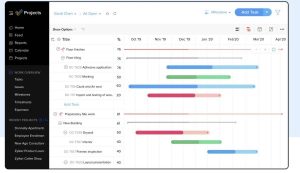Ecommerce sales continue to grow, generating over $ 300 billion in sales in the US alone last year. However, online shopping is generally an impersonal experience with lower levels of engagement as compared to the in-store experience. Unlike walking into a brick-and-mortar retail location where a shopper can touch the merchandise or ask sales associates questions, the online shopper typically only interacts with a live person afterthe sale – and generally only if there was a problem. As a result, online conversion rates are much lower than in-store conversion rates, 1% to 3% versus 20% to 30%.
Shopping cart abandonment is also continuing to rise. According to research performed by Baymard, the average rate is 68.07%. That means that roughly 1 in every 4 customers actually complete the purchase.
The number one reason why shoppers fail to complete their purchase is price. According to research conducted by Statistia in 2013, 56% of shoppers said that being presented with unexpected costs was the main reason they left without completing their purchase. This was followed by consumers just browsing (37%) or finding a better price elsewhere (36%).

Retailers can take steps to improve conversion rates and reduce shopping cart abandonment. While it may seem like an uphill battle at times when a shopper cites price as a major deterrent to completing the purchase, times are changing. Three years after this initial study was conducted, price of course remains an important factor for shoppers, but certainly not the only one.
More so than ever, a positive customer experience is mitigating the pricing wars. Industry statistics indicate that by 2020, the customer experience will overtake price completely as the key to competitive differentiation. Consumers are willing to pay more for positive experiences and this trend will continue for some time.
Here are key ways to improve customer conversions:
Collect Consumer Data to Personalize Experiences
Collecting consumer data during each visit and interaction with your brand provide key insights into a shopper’s behaviors, preferences, and purchasing habits. This data can be used to create personalized and highly contextual messages to create a positive experience and for retargeting when a cart is abandoned.
Salesforce.com asked consumers how they felt about their data being collected by companies to establish this comprehensive customer view. The overall feeling was that if their marketing data allowed companies to personalize offers, provide better customer service, or prevent situations in which they have to give the same information to multiple people over and over, then it was a good thing. One respondent said, “I don’t want to have to repeat my information to 5 different people when I call their support line,” and according to another, “It dramatically increases the likelihood that I would continue to give a company my business.”

Research shows that 45% of consumers are more likely to shop on a site that offers personalized recommendations, and 56% are more likely to return to a site that recommends products. (Invesp)
When deciding which types of personalization to utilize, consider the following statistics from MyBuy’s 2015 Personalization Consumer Survey. Consumers purchase more from brands who:
· 53% – Suggests products based on browsing or buying behavior
· 49% – Personalize online ads that promote offers and products from website activity
· 48% – Send personalized emails based on past browsing and buying behavior
· 48% – personalize the shopping experience across all channels
· 33% – Show personalized ads in social media feeds
While there is obviously huge uplift when personalizing consumer interactions, many marketers are unaware of the negative impacts of sending impersonal messaging. A recent survey by Gigya revealed that 67% of consumers have unsubscribed from an email list when sent irrelevant information. An additional 43% ignored future communications from the company, and 32% stopped visiting the company’s website or mobile app.
Bring Shoppers Back to Your Site with Retargeting
Retargeting consumers through ads and emails with specialized offers encourage many shoppers to return to your site. A survey by VWO on ecommerce showed that 72% of all people aged 25-34 were very likely to buy a product they left in their carts if offered again at a discounted price (the average of all age groups was 54%). In a study by Compete, free shipping not only increases conversion rates, but also encourages 93% of shoppers to buy more products.

Other studies give further credence to these claims. A Deloitte study found 69% of shoppers are more likely to shop with online retailers who offer free shipping. And a ComScore study found that 61% of shoppers would quit their order if free shipping wasn’t offered.
Retailers should retarget through both ads and email. Amazon is a great example of a brand that brings visitors back with ad retargeting. According to AdRoll, a retargeting platform, “2% of shoppers convert on the first visit to an online store. Retargeting brings back the other 98%. Retargeting works by keeping track of people who visit your site and displaying your [retargeting] ads to them as they visit other sites online.” Triggered shopping cart abandonment emails can also bring customers back to complete a purchase. According to Business Insider, Initial emails sent three hours after a consumer abandons a cart average a 40% open rate and a 20% click-through rate.
Use Automated Marketing to Target in Real-Time
Using a marketing automation platform to create automated customer journeys ensures that the most optimal messaging is sent through the channels in which your customers and prospects are interacting with you. For example, campaigns can be created that recognize if customers have visited your website, browsed certain product categories, opened your emails or visited your stores.
By delivering automated, relevant content at the right time you can keep these consumers moving through the journey to increase conversion rates and lifetime value.
Example of Customer Journey Map

Online ecommerce brands lose revenue every day due to abandoned shopping carts and shoppers failing to complete their purchase. However, retailers can take steps to improve conversion rates and reduce shopping cart abandonment through the right mix of data, technology and analytics.
To learn how to target the right consumers at the right time with automated customer journey marketing, request a free demo of the DataMentors Marketing Cloud.
Digital & Social Articles on Business 2 Community
(42)









